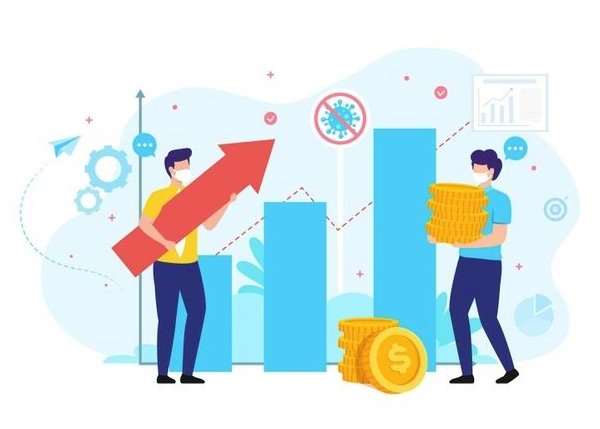Look before you leap.
We are all aware of the importance of studying the market before we commit to making any investments. In this article, we will take a look at an alternative approach to timing the market. We will explore Macro Investing and how it differs from the conventional bottom-up approach to investing.
Macro Investing
Macro investing is less concerned with individual businesses and more concerned with the policy environment and economy in which the companies operate. On the other hand, Bottom-up investing entails identifying good investments and management and backing them up with your capital.
So macro is an approach dependent on policy cycle evolution. It is more interested in knowing whether incremental actions taken by policymakers, the Government & RBI are Growth-oriented or Inflation oriented?
Macro looks at policy, demographics, their evolution, and how they affect the investment climate. Here you will be looking at how all of the relevant firms (500) are performing collectively.
The differentiating factor is the policy architecture, consumer and banking systems in the economy, and the population age base, whether it is relatively aging or growing younger. This creates the macro-environment in which you will decide whether to invest in equity, bond, dollar, Indian currency, credit, or AAA.
Bottom-up Investing
This approach involves taking a closer look at a particular business. You will be more concerned about the industry, management, location of the plant, operating costs, etc. Investors will back the companies whose business capital is well managed. They will choose companies whose ROE and growth are better than other companies.
Bottom-up investors are long-term investors as long as bad news about business and management does not start pouring in.
Buy & Hold
Many fund managers talk about the buy and hold strategy; however, this is not bottom-up investing. Because the average firm dies in 20-25 years, buy and hold is surprisingly not one the best-performing asset class styles.
That’s why it’s important to only back firms that are growth-oriented and allocate their capital efficiently. It’s also equally important to have an exit strategy in place.
Cycle Framework
Macro investing is viewed through the cycle framework. If you are an investor, you will encounter early, mid, and late-cycle events.
Early Cycle
Early cycles are periods when the hard data of the economy is pretty bad. Which means that growth is decelerating, maybe due to a crisis that has affected the economy. There is a downward correction in the equity market.
So the policymakers, RBI & the government step forward and take measures such as lowering the interest rates, providing a fiscal stimulus, tax cuts, etc. Encouraging the companies to leverage on growth and increase the consumers spending power. A lot of things are done to revive the economy.
So you make good returns when the news is bad, and policymakers are leaning against the bad news. You get lower valuations, and as risk appetite improves, equity markets provide the best returns when the market resumes growth and sentiment.
Macro-investor Maneesh Dangi turned extremely constructive in march 2020 and the middle of 2013. Easing rates and increasing the fiscal deficit normalized everything within 6-12 months. He calls this reflation cycle when the policymakers are trying hard to bring the growth back.
Mid-cycle
Once the economy starts recovering, the government and the RBI stop cutting rates. However, the news is communicated to the market in advance. So this does not affect the market too much, and since revenues have recovered, the consumer starts making big-ticket purchases, like taking out a loan or industrialists start taking CAPEX. So the leverage cycle begins again; this is the mid-cycle.
Herein the economy, everyone outside the government starts leveraging, increasing the profit pool. Due to the leverage, the profit pool increases while the government begins tightening the rates. Mid-cycle can be called a re-leveraged cycle, wherein the consumer and industries start taking leverage.
Late cycle
Inflation makes its entry in this cycle. As the recovery matures, inflation and interest rates typically rise. The economy begins to grow at a point where there is a supply shortage. Say there are 5000 rooms in Mumbai, but if there is a demand for 5500 guests one day, all prices will skyrocket. So all the policymakers will lean against it because whenever there has been great inflation in any part of the world, there has been a sharp slowdown in the industry.
Why Macro Investing?
Macro-investing has the capability to outperform the indices by investing using a macro approach. This approach will help reduce losses because when you are at the end of the cycle, this diversified investing approach will cushion the effects of market volatility that may possibly affect NIFTY or any stock during this period.
Macro Investing is done on an index level, equity vs. bond, dollar vs. currency, credit vs. bond credit. If you can determine that we are in an early cycle, invest most of your money in small and mid-cap stocks. If you are advised that it is mid-cycle, invest most of your money in large-cap, nifty, and similar indices and mutual funds. If you are advised that it is late-cycle, invest the majority of your money in long bonds.
This investment strategy does require in-depth knowledge and up-to-date information about macro-economic factors that affect economic activity. This approach has been tried and tested and does offer the ability to make reasonable risk-adjusted returns on your portfolio while minimizing the associated risks.






